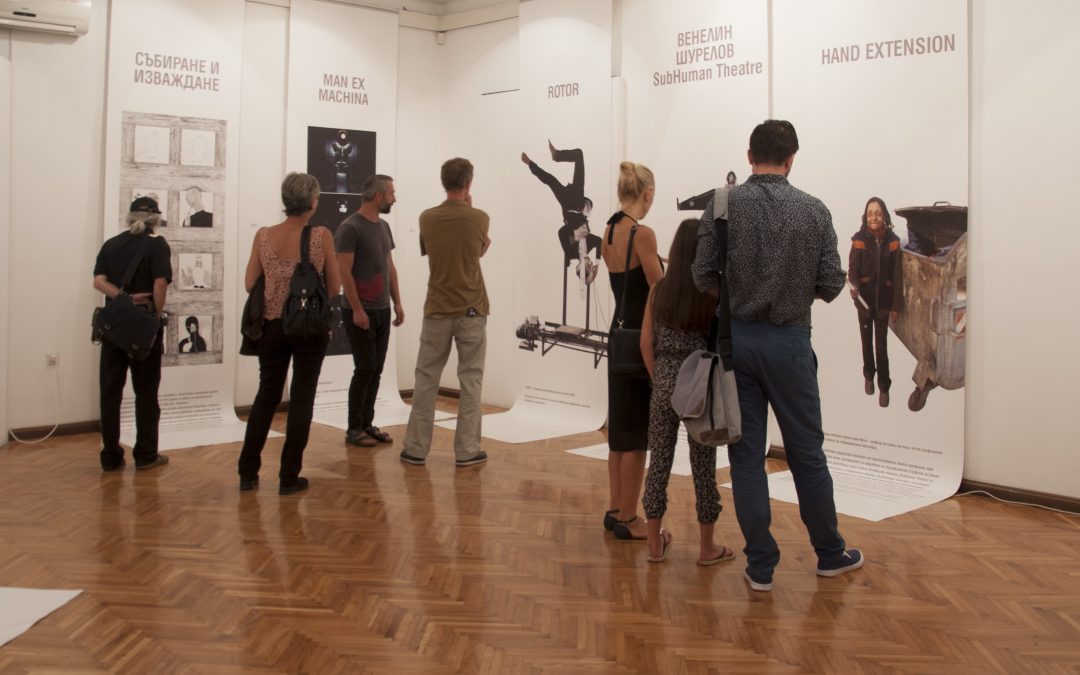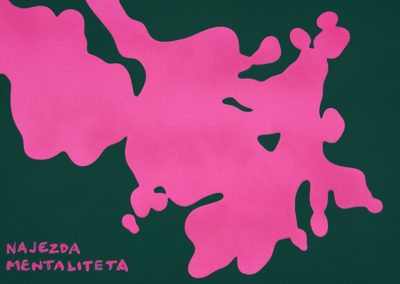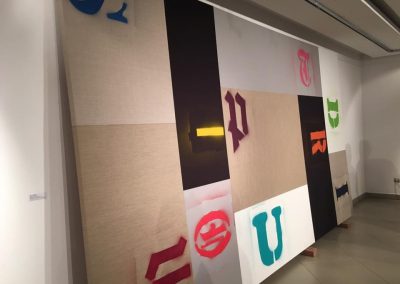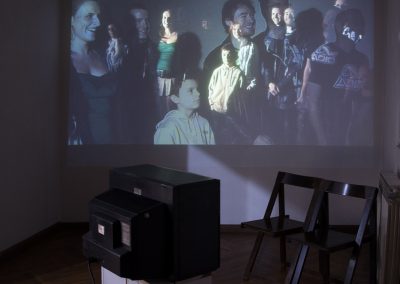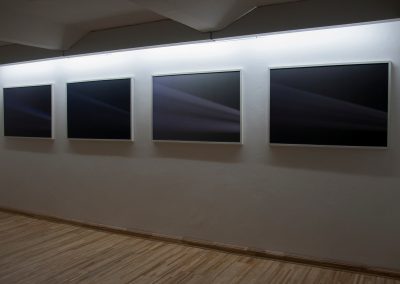Venelin Shurelov (Bulgaria): I participated in the exhibition both as a curator and as an artist. I decided to present fragments of my artistic practice of the last ten years, the reason being that the problems in my work are close to the general theme of the exhibition. The topic of global insecurity has been materialized in my art through the ideas of social and technological marginalization. This was also an occasion to experience a state of risk through the risk of the body at the intersection between nature and technology.
IN DIALOGUE WITH OTHER ARTISTS: In the exhibition space where my work was shown, the artwork of Ana Petrović (Croatia) was also displayed. The two of us speak similar language in the construction of poetic/ critical contemporary visual mythology. We also had great communication with the artists from Austria. I am engaged in multidisciplinary art and for me dialogue and curiosity about other artists is always important.
Žolt Kovač (Serbia): Insecurity arises not only from the economic or global geopolitical situation, but also from the crisis of confidence and sociability. We live in a state of semi-periphery. This state aspires to acquire economic and cultural characteristics of the center but is at the same time afraid of losing its identity in the process. So, traditionalist forces are really strong. The tension created by these two opposing forces, as well as our constant transition, create an impression of insecurity, and this is reflected in my work. My work aims to show the characteristics of our society, communication within it, its culture and mentality.
IN DIALOGUE WITH OTHER ARTISTS: Interestingly, my work was set in the context of the group Škart and their work. We both use textual messages, but in line with its spirit, the Škart group uses cheaper materials and spontaneous approach, while for me it is a complicated process, materials are expensive, and paintings pre-planned. We are both socially engaged in our work. While Škart’s work deals with universal themes of wealth and poverty, my work deals with local issues.
Ulrike Kessl (Germany): In my work I use elements of everyday culture and I put them in a new context. Thus I enable the audience to change the perception of things and space. This can be a reason for insecurity but also a way to get over it.
IN DIALOGUE WITH OTHER ARTISTS: I liked the work of Nela Hasanbegovic and Daniel Premec, not only because they also deal with garments and everyday phenomens. They find simple and clear forms for complex artistic statement.
Michael Endlicher (Austria): Franz Stephan Kohl and I made artwork Disruption is the new Continuity for the Danube Dialogs 2016. It was conceived to comment, illustrate and interpret the topic by focusing on a concrete global phenomenon and discuss it through aesthetic means as one of the main topics of “Global Insecurity“.
IN DIALOGUE WITH OTHER ARTISTS: I think, our piece has something in common most likely with the work of Uroš Weinberger, who translates the „Global Insecurity“ into surrealistic tableaus, but often names realistic culprits of the situation: major international corporations and networks. In our art piece we are naming one of the major principles of this devastating approach. However, I may be wrong.
Lukas Kellner (Czech Republic): For me it’s a moment of fun (humor). Many people around me are scared about politics, future, survival. I have those feelings too, but I think we must be strong and live with humor and joy. Humor is the best weapon against idiots.
IN DIALOGUE WITH OTHER ARTISTS: At this moment I don’t think so. I saw that there were a lot hard loaded, relatively clear-cut works. So if I think about it again, my work sent a completely different message and there is a dialog with others. In the opposite view (form of presentation) although like-minded expression.
Ana Petrović (Croatia): The works selected and exhibited at the Danube Dialogues were the ones where the narratives (figurative and abstract) are exposed to various types of reduction, the greatest of which is the sense of sight – one of the greatest motivators of visual art. As we tour the exhibition, we still see in our reduction that a minimalist attitude towards the observer did not leave behind nothingness, but rather different ways of looking at things and a new experience. I feel that global problems, likewise, bring insecurity which is inherently negative, but if we look at the problem in a new and different way it could become an opportunity for creative growth in hope that we leave the world a little better place to live.
IN DIALOGUE WITH OTHER ARTISTS: I feel that my artistic approach and thinking is in a way closest to Ulrike Kessl, although I must say that I was unable to examine the exhibitions as they deserve, i.e. by devoting them more time and greater concentration, especially at the Gallery of Rajko Mamuzić. We all worked hard to have these exhibitions ready for the opening, but the opening itself is the worst time to see an exhibition. It would have taken the artists at least another day in Novi Sad to get a deeper impression.

